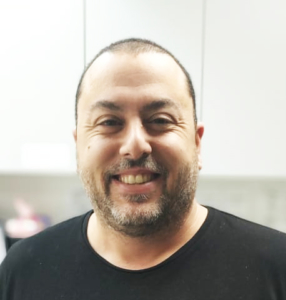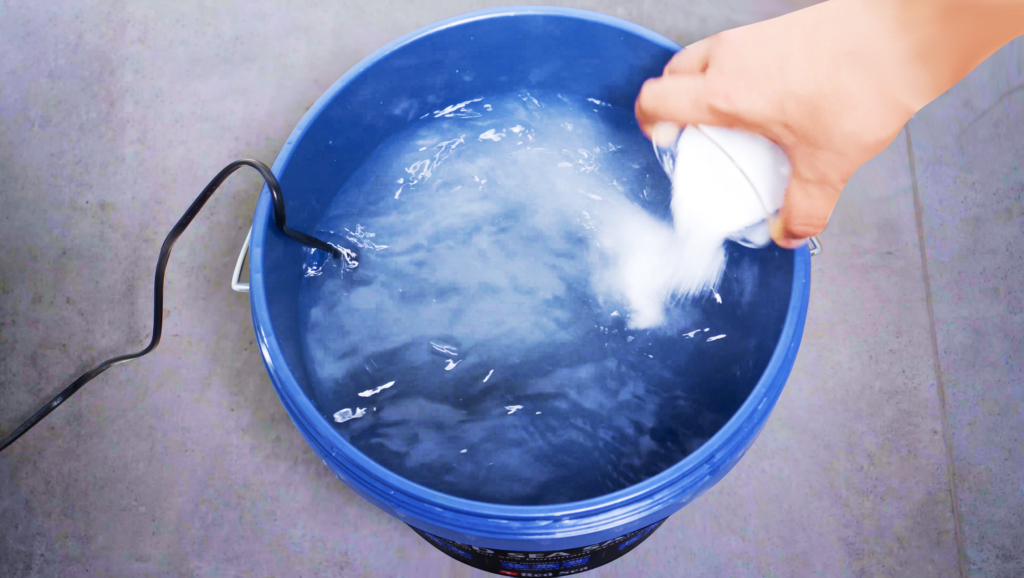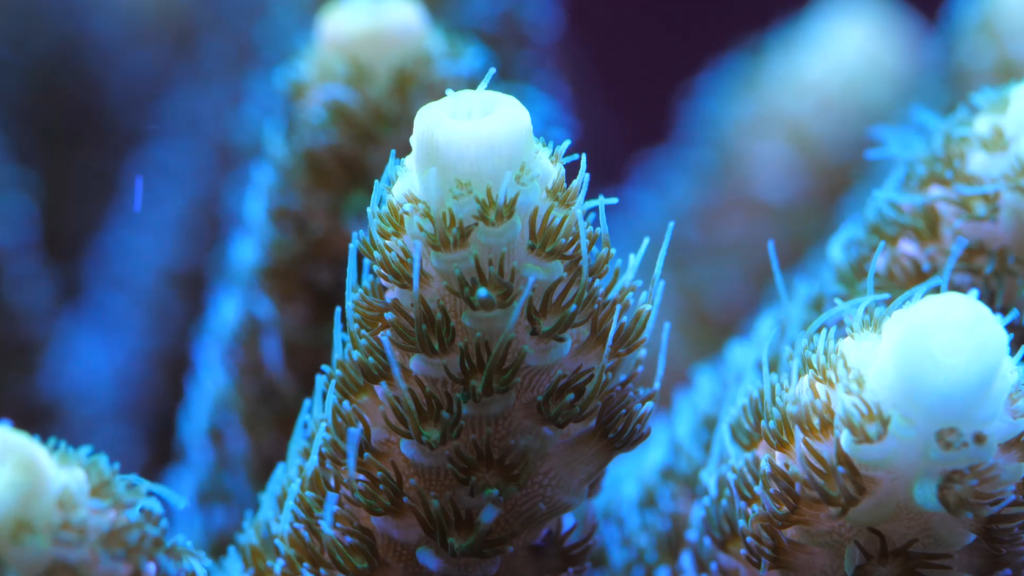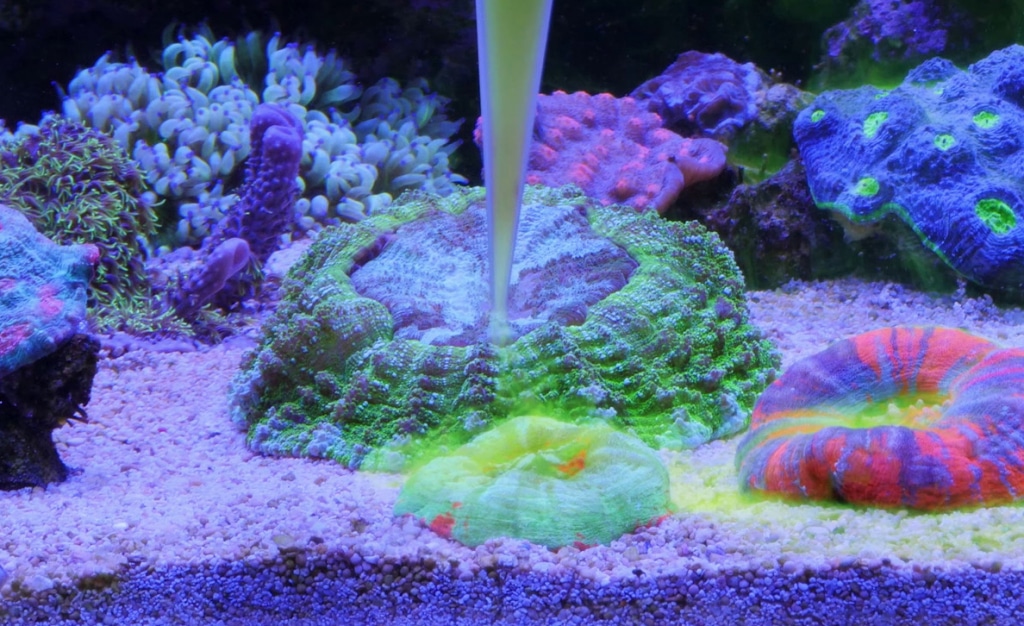
Sharon Ram
Red Sea's Chief scientist
- 5 minutes read
Nitrate and Phosphate reduction via Carbon dosing
Nutrients management | Red Sea Insights
Fighting nutrient build up in the aquarium is one of the major struggles the common hobbyist must face on a daily basis. Today, there are several methods to reduce nutrient levels; some by resins (ad/absorbers) and
other chemical filtration components, but the latest trends include “pro-biotic” and/or the enhancement of biological nutrient reduction by bacteria.
Most hobbyists that favor biological filtration are well aware that the limiting factor in these processes is the absence of low molecular weight carbon compounds, which act as the energy source for the reduction processes.
In order to boost the biological activity, many hobbyists started to dose the tank with any available carbon sources such as vodka, vinegar, and sugars or various mixtures of all three. The common practice is based on providing enough organic carbon sources, that together with the availability of the anoxic areas in the tank (live rocks and sediment) will promote proper denitrification and phosphate reduction activities.
However, it may also encourage other biological activities that may lead to disastrous results if not prevented or controlled. It is important to be aware that the dissimilation processes in the marine environment involves very complicated ecological interactions between several groups of bacteria. These groups include two groups of dissimilatory nitrate reducers, another group of POA’s (phosphate accumulating bacteria or PHA bacteria) and the SRB’s (Sulfate-reducing bacteria).
Continuous competition and inhibition relationships exist between these four groups. They are regulated by the concentrations, availability, and ratios of nutrients (nitrogen, phosphorus, and sulfur), the availabilities of enzymatic co-factors and other biotic and abiotic factors.
When we investigated the dissimilatory pathways in the aquarium, we found there are two major bacterial groups. The first group is the DNRA bacteria that reduce nitrate to either nitrite or ammonia. The second group consists of heterotrophic denitrifiers that reduce nitrate via nitrite to gaseous nitrogen. Elemental nitrogen is the end product of this process, but an intermediate accumulation of nitrite, nitric oxide, and nitrous oxide may take place under certain conditions, usually in the absence of enzymatic co-factors.
Environmental factors, in particular, the availability and type of organic carbon compounds, the C/N ratio, the availability of specific co-factors and the oxidation/reduction state of the aquatic environment, dictate to a large extent the occurrence of each dissimilatory group and the primary reduction pathway.
For example; an unbalanced C/N ratio will prevent full denitrification and will increase DNRA activity, which leads to the accumulation of ammonia and nitrite. After the initial maturation cycle, most hobbyists do not test for NH4+ and NO2– and therefore while dosing carbon sources, they may observe a reduction in NO3– but will not notice any accumulation of ammonia or nitrite. Even when the C/N ratio is optimal for denitrification, other obligatory factors regulate the full denitrification of nitrate to free nitrogen.
These factors include specific chemical elements that act as co-factors in each stage of the denitrification process. The absence or unbalanced levels of these elements may end the denitrification process in any of the early stages and will lead to the accumulation of toxic N2O and NO.
Therefore, one of the important aspects of biological nutrient reduction is to promote specific dissimilatory pathway of heterotrophic bacteria and to ensure a complete process. NO3:PO4-X was developed to meet this objective.
Red Sea’s NO3:PO4-X, a part of Red Sea Nutrients Management program, provides chemically balanced levels of several carbon compounds, which we found promote heterotrophic denitrifiers upon the DNRA bacteria thereby preventing the accumulation of ammonia or nitrite.
NO3:PO4-X also provides seven enzymatic co-factors to insure complete denitrification to nitrogen gas and prevent the probability for N2O and NO formation.
Usually, under denitrifying conditions with the availability of a sufficient carbon source, two other groups of nutrient reducing bacteria will start to thrive: the polyphosphate accumulating bacteria and the sulfate-reducing bacteria. These two groups have a significant impact on the overall nutrient reduction processes in the aquarium. The most common PAO’s or Poly-P bacteria are the PHA’s that accumulate phosphate in a two-stage process of aerobic/anoxic and anaerobic conditions.
These bacteria compete with the denitrifiers for the carbon source, and in anaerobic conditions, they may release PO4–3 back to the water.
We have found that specific strains of heterotrophic denitrifiers are capable of accumulating phosphate and synthesize poly-P during the process of nitrate reduction with nitrate instead of oxygen serving as the terminal electron acceptor, so the double stage of aerobic/anoxic becomes irrelevant. When the bacterial population proliferates, bacterial flocks released to the water column are then taken out by the skimmer and therefore phosphates are stripped out of the system.
Red Sea’s NO3:PO4-X promotes the proliferation of heterotrophic denitrifiers that have the biological capability to synthesize polyp in anoxic conditions (that can be called PHB) upon other PHA bacteria by maintaining balanced reduction of both nitrate and phosphate. Rapid reduction of nitrate over phosphate will lead to a rapid proliferation of anaerobic PHA bacteria and cyanobacteria outbreak that can assimilate atmospheric nitrogen to thrive.
The fourth group of bacteria is SRB. These bacteria reduce sulfate to toxic sulfide in anaerobic conditions. Since sulfate is present in seawater at levels around 940 ppm, and carbon source and anaerobic conditions are also available, nothing can prevent sulfide production.
The proliferation of SRB’s will affect the other bacterial groups by competing for the carbon sources and by inhibiting their activities due to the toxic sulfide they release.
During our research, we have found three elements that can inhibit the activity of SRB by competing with sulfate and breaking the intracellular respiratory complex thereby preventing the formation of hydrogen sulfide while still enhancing the biological nutrient reduction in anoxic conditions.


